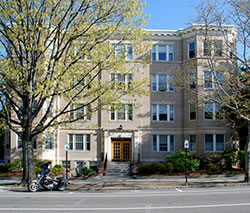
Keith W. Michon, P.C. – Condo Conversions
- Condo Conversion: Why so popular?
- Step 1: Yes or No?
- Step 2: Who will be needed and why?
- Step 3: Understanding the Condo Documents
- Step 4: What else to consider?
Condo Conversion: Why so popular?
Condominium conversion, which changes the legal status of a property, has been very popular in Massachusetts for decades. For a seller, the condominium conversion process represents a way to legally separate and sell apartments one or more at a time. For a buyer, the process represents a less costly way to enter the home ownership market since a condominium unit is typically much more affordable than a multifamily building. For a lender, the condominium conversion represents increased and stable buying power. The conversion of a three family building to condominium status will result in thee separate buyers with separate earning power borrowing lower amounts of money (thus reducing lender risk).
Step 1: Yes or No?
When deciding whether to convert a multifamily home into a condominium, it is important to verify whether major physical changes will be required to the structure and/or system components. For example, condominium units typically have separate heating systems, hot water heaters, electrical panels and/or electric meters. The condominium units typically require two separate methods of entry/exit in order to comply with local fire regulations. In most cases, a front porch with internal stairs and multilevel rear deck with internal or external stairs provide the necessary access. Major renovations will greatly increase the cost of a condominium conversion that will significantly impact profit margin.
Step 2: Who will be needed and why?
In evaluating a condo conversion project, it is a good idea to contact a real estate broker for a market assessment. The assessment will provide valuable information such as recent comparable sales in the area, market trends along with a honest opinion as to the pros and cons of the particular building based on experience. An experienced broker is also a valuable resource for finding quality and dependable contractors and tradesmen. At the appropriate time, the real estate broker will list the units on the Multiple Listing Service or "MLS" thereby dramatically increasing the visibility of the project to prospective buyers.
The next step will be to find a real estate lawyer. His or her first task will be to verify that the condo conversion does not violate local zoning or require a special permit. In a condo conversion, an experienced lawyer not only drafts the condominium documents, but also coordinates and guides the entire conversion project. For example, the lawyer can contact a qualified registered surveyor who will be required to prepare a site plan of the property. In addition, an architect or certified professional surveyor must generate floor plans for each unit called "unit plans." In many cases, the lawyer can oversee the preparation of the plans while incorporating certain key information into the condominium documents.
The lawyer can also insure that the seller complies with local municipal rules and regulations and provide assistance in obtaining municipal project approval, if necessary. In some cases, the lawyer will be required to obtain court approval of the condominium documents and plans if the property title is "registered land." Lastly, the lawyer can provide a listing of fees (legal and municipal) which will be required depending on the property and location.
Step 3: Understanding the Condo Documents
Condominium documents are typically made up of a "Master Deed" and "Declaration of Trust." The Master Deed, which is signed by the seller, represents the legal vehicle that converts the multifamily building into a condominium at the time of recording. The Master Deed also details the ownership rights of each unit, including the use of decks, parking and storage areas located on the property. The Declaration of Trust details the governing body of the condominium and usually contains the rules and regulations that will apply equally to all owners. This document is recorded with the Master Deed at the County Registry where the property is located.
Step 4: What else to consider?
A successful condo conversion must take into consideration whether any mortgage loans are held against the property. This will determine how the units may need to be marketed. For example, if the outstanding balance of the current loan is more than the sales price of one condo unit, the coordinated marketing and sale of two units will be required to insure that enough proceeds will be generated to payoff and extinguish the loan. The seller may attempt to contact the current lender to obtain a "partial release" which is a discharge for a particular unit being sold in exchange for a partial payment of the loan balance. However, such a process is time consuming and is rarely granted.
The seller must also arrange for "condominium insurance" prior to formal condominium conversion. This type of insurance essentially represents fire hazard coverage and provides coverage for the building as a whole. Each time a unit is sold, a "Certificate of Insurance" must be presented to the lender listing them as an insured party for that particular unit. At the closing, the lawyer should make sure that the seller is reimbursed for insurance monies prepaid for the unit.
In addition, the seller must establish a preliminary annual "condominium budget." This information is often required by the lender as part of the buyer's approval process. The initial budget should contain items such as the annual cost of condo insurance. Condominium insurance typically represents 60-70% of the budget for 2 and 3 unit condominiums. This will help set the monthly condo fees which will need to at least cover annual expenses. It is customary to collect two months condominium reserves at the sale of each unit to help establish the initial reserve account.
Lastly, the lawyer can assist the seller by preparing and/or reviewing the contracts to purchase and providing seller representation for the sale of each condominium unit.
